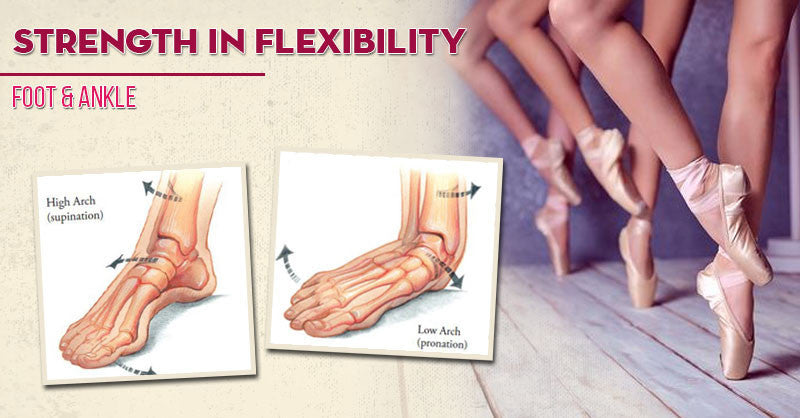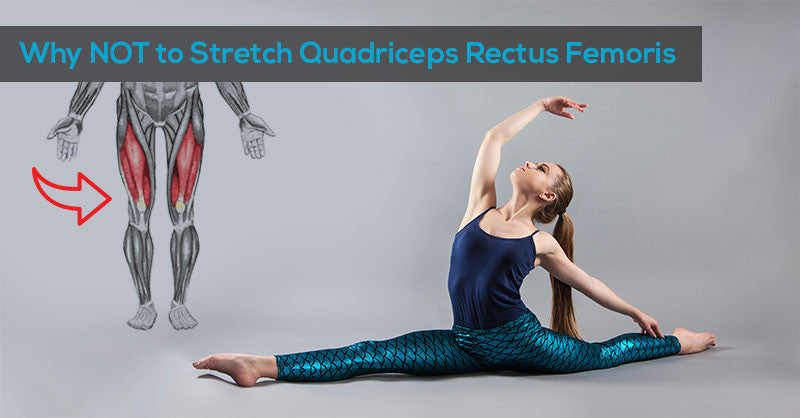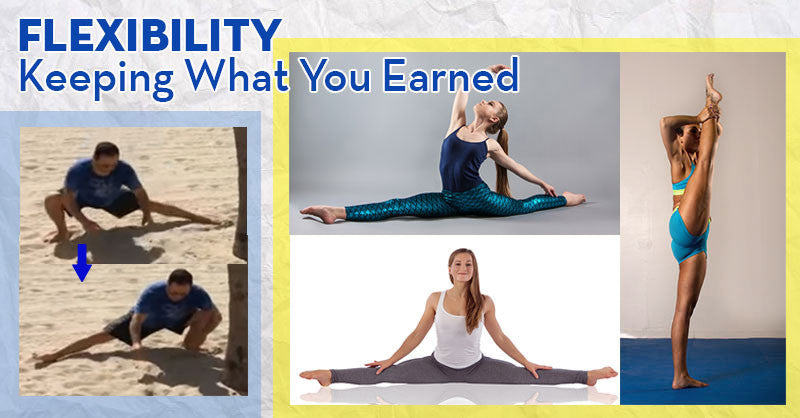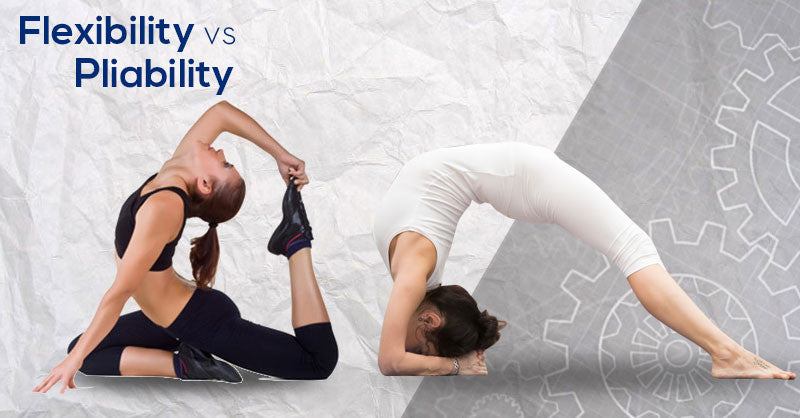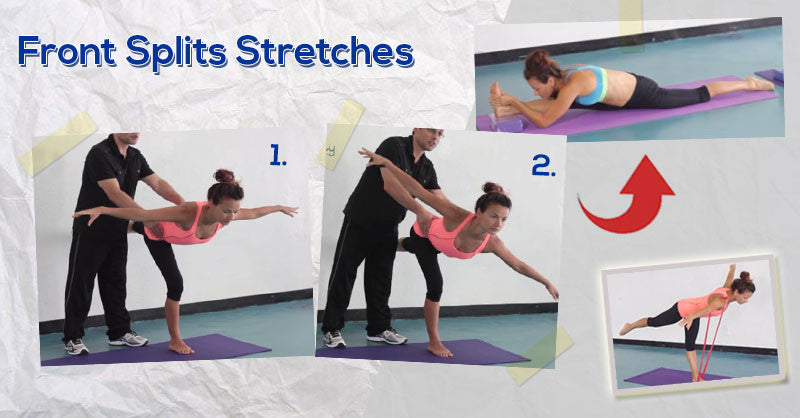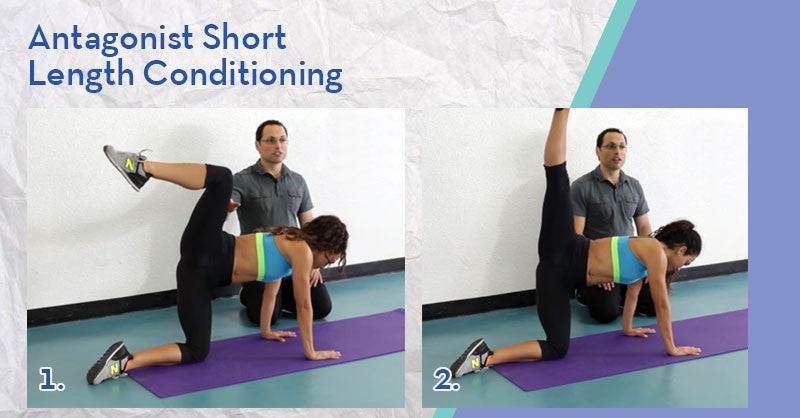Mastering First Position Ballet: The Crucial Role of the Semitendinosus in Achieving Perfect Turnout
Posted by EasyFlexibility Team on
Unlocking the Secrets of the Semitendinosus: Its Role in Ballet's First Position
Today, we're diving deep into the world of muscles and movement, focusing on a star player that doesn't always get the spotlight it deserves – the semitendinosus. This muscle is a key component in achieving the grace and precision of ballet, especially when it comes to the foundational turnout (first position). So, let's lace up our pointe shoes and explore the anatomy of the semitendinosus and its pivotal role in ballet dance positions.
- The Semitendinosus Anatomy: A Quick Overview
- Why is turnout important in Ballet?
- The Semitendinosus muscle in Turnout Ballet Position - Could this be the muscle that is preventing you from doing a full turnout?
- The Origins of Turnout Position in Ballet
- Why forcing ballet turnout is a bad idea!
-
Turnout Ballet Stretch Exercise to help you with your Turnout RIGHT NOW!

The Semitendinosus Anatomy: A Quick Overview
Before we pirouette into the specifics, let's get acquainted with the semitendinosus muscle. Part of the hamstring group, this muscle runs down the back of your thigh, and it's all about enabling movement and providing stability.
Origin: It starts at the ischial tuberosity in the pelvis – basically, the part you sit on. In other words, this muscle's story starts at the ischial tuberosity in the pelvis. In simpler terms, it's anchored right where you sit down. Imagine it as the starting line for a muscle that's about to go on a very important journey down the back of your thigh.
Insertion: This muscle makes its grand finale at the upper part of the tibia, which is the shinbone. In other words, the journey ends at the upper part of the tibia, which is just a fancy way of saying the shinbone. Think of this as the muscle's finish line, where it gets to say, "I made it!" and plays its part in helping you move your leg.
Action: When it comes to the moves, the semitendinosus helps in bending the knee and extending the hip. It's also a maestro of internal and external rotation of the thigh, which is crucial for ballet dancers. Now, what does this muscle actually do? It's like the director of a play, guiding the bending of the knee and the stretching of the hip. Plus, it's a pro at twisting the thigh inward and outward, which is super important for dancers to nail those elegant moves.
Nerve: Enter the sciatic nerve, the longest and widest nerve in the body, acting like the conductor of an orchestra. It makes sure the semitendinosus muscle gets the message loud and clear on when to move and how, ensuring every step you take is smooth and coordinated.

Why is turnout important in Ballet?
Now, let's talk about ballet – a world where every detail matters, and every muscle plays a role. The first position in ballet, characterized by the turnout of the legs from the hips, is where the semitendinosus shines.
But before we dive into the details of how semitendinosus muscle works in the turnout position, lets find out why is turnout important in Ballet?
In the world of ballet, turnout isn't just a technique—it's the foundation upon which the art form is built. This outward rotation of the legs from the hips is more than a visual aesthetic; it's a functional aspect that defines the grace, balance, and strength of a dancer. Today, we're exploring the significance of turnout in ballet, shedding light on why it's considered a cornerstone of ballet technique, what role does a semitendinosus muscle play in ballet turnout and how it influences a dancer's performance.

The Semitendinosus muscle in Turnout Ballet Position - Could this be the muscle that is preventing you from doing a full turnout?
The semitendinosus muscle, part of the hamstring group located at the back of the thigh, plays a pivotal role in ballet, particularly in achieving an effective turnout. Turnout, the ability to rotate the legs outward from the hip joint, is a fundamental aspect of ballet technique, allowing dancers to perform with grace, stability, and precision. The importance of the semitendinosus muscle in this aspect of ballet cannot be overstated for several reasons:
- Flexibility and Range of Motion: The semitendinosus muscle contributes significantly to the flexibility and range of motion in the hips and legs. A well-stretched and flexible semitendinosus muscle allows for a greater range of outward rotation from the hips, which is crucial for achieving a full turnout. This flexibility is essential not just for the aesthetics of ballet positions and movements but also for the functionality and fluidity of dance sequences.
- Strength and Stability: While flexibility is crucial, the strength of the semitendinosus muscle is equally important in maintaining a turnout. This muscle helps stabilize the leg when it's turned out, providing the strength needed to hold positions and perform movements without compromising form or risking injury. Strong hamstrings ensure that the turnout is supported by muscle strength rather than relying on joint flexibility alone, which can lead to strain and injury over time.
- Injury Prevention: The semitendinosus, by virtue of its role in flexibility and strength, is key in preventing injuries common in ballet. Dancers often push their bodies to the limits, and without the proper support from muscles like the semitendinosus, they are at a higher risk of strains, sprains, and other injuries. A strong and flexible semitendinosus muscle helps distribute the force exerted during dance movements more evenly across the leg, reducing the pressure on joints and other vulnerable areas.
- Enhanced Performance: Ultimately, the condition of the semitendinosus muscle can significantly impact a dancer's performance. A well-developed semitendinosus allows for higher leg extensions, deeper pliés, and more pronounced turnout, all of which contribute to the overall beauty and execution of ballet techniques. Dancers with optimal semitendinosus conditioning can perform more complex and demanding choreography, pushing the boundaries of their art.
Incorporating specific stretching and strengthening exercises targeting the semitendinosus and other muscles involved in turnout is crucial for ballet dancers. Programs like the EasyFlexibility Turnout program, which utilize targeted techniques to improve flexibility and strength in the muscles essential for turnout, can be incredibly beneficial. By focusing on the health and conditioning of the semitendinosus muscle, dancers can enhance their turnout, prevent injuries, and achieve a higher caliber of performance.

The Origins of Turnout Position in Ballet
The concept of turn-out has deep roots tracing back to the French and Italian courts, where it developed from a mix of interesting practices. These included the art of fencing, the etiquette of moving sideways or backing away in the presence of the king to avoid turning one's back on him, and a particularly charming practice of displaying the elaborate designs on the heels of one's shoes. This last practice was notably adopted by France's King Louis XIV, "The Sun King," who in 1661 founded the Royal Academy of Dance and was keen on showcasing his ornately decorated shoes to the court.
For a long time, achieving the "ideal" turn-out in ballet meant having your feet completely turned out in a straight line to the sides, forming a perfect 180-degree angle.
It's understood that the average dancer achieves a turnout of about 55 degrees, and sometimes a bit more, yet it's rare to find individuals who reach a 90-degree turnout in the hip socket, which translates to a full 180 degrees when the heels are together in the first position.
Traditionally achieving a perfect turnout is a journey that required dedication, strength, and flexibility, which very few were able to do. Because ballet turnout is not merely about rotating the feet outward; true turnout originates from the hips, engaging the entire leg.

Why forcing ballet turnout is a bad idea!
Many ballet schools traditionally push their dancers toward achieving a turnout, a practice that can be quite detrimental. Forcing a turnout can lead to unwanted stress and strain on parts of the body not meant to handle such pressure, particularly affecting the feet, knees, and lower back.
This is where our EasyFlexibility Turnout program steps in to make a difference. By incorporating the innovative Zaichik Stretching Techniques, our program is designed to revolutionize your turnout journey, enabling you to achieve the sought-after 180-degree turnout in a manner that's fast, safe, and effortless.
The key lies in our approach: rather than forcing a turnout, we focus on naturally enhancing the flexibility of specific muscles essential for achieving a full turnout. Our online Ballet Turnout training program meticulously breaks down the turnout process, targeting each muscle group involved in hip turnout without any force.
Exploring the wonders of Zaichik Stretching Techniques (ZST) could easily fill hours, but why just talk about it? We encourage you to try a ZST for yourself right now and discover the essence of the EasyFlexibility Ballet Turnout Program firsthand!
Turnout Ballet Stretch Exercise from the EasyFlexibility Ballet Turnout online on Demand Video Training Program called ~Fulfillment~ ZST (Hip External Rotation)
The following Zaichik Stretching Technique (ZST) is taken from the EasyFlexibility Hip Turnout Program. This ZST works on External Hip Rotation.
To perform ~Fulfillment~ ZST:

- Lie down on the side.
- Rotate the bottom hip out.
- Flex the bottom knee to about 90 degrees.
- Keep the top leg straight.






Ballet Turnout Strength & Flexibility Training at Home
FROM EASIEST TO ADVANCED

- See visible results in 1 to 3 easy follow along workouts.
- Unique muscle by muscle isolation stretching techniques.
- Fast Progress.
- Permanent Results.
- No Pain.
- No Injuries.
- Flexibility & Strength combined.
- For all ages.
- 30 – 40 minute workouts, 2 – 3 times a week.
- All videos contain subtitles.
- Train at home. At your own pace. On any device.
- Instant Lifetime Access.
- No hidden fees. No strings attached. No surprises.


In conclusion the semitendinosus might not be the muscle that immediately comes to mind when you think of ballet, but its contribution to the art form is undeniable.
So, the next time you're stretching at the barre or working on your turnout, give a little nod to the semitendinosus – the muscle that helps make ballet's beautiful movements possible.
At EasyFlexibility, we take pride in offering a diverse range of over 100 targeted programs designed to meet all your flexibility needs.
Our programs are meticulously crafted to be safe, efficient, and pain-free, providing a proven system that guarantees results.
Join the thriving community of thousands who have successfully achieved their flexibility goals through our programs.
🛑 Struggling to choose the perfect program for your needs? Take our goals quiz for a quick match with the ideal program. 🧲 👉 https://www.easyflexibility.com/pages/take-our-quiz Alternatively, reach out to us directly 📧, and we'll guide you in selecting the program that best suits you. Let's find the perfect fit together! 🌟
Share this post
- Tags: ballet first position, ballet positions, ballet turnout, history of turnout in ballet, semitendinosus, semitendinosus muscles, turnout in ballet, why semitendinosus is important for turnout in ballet






